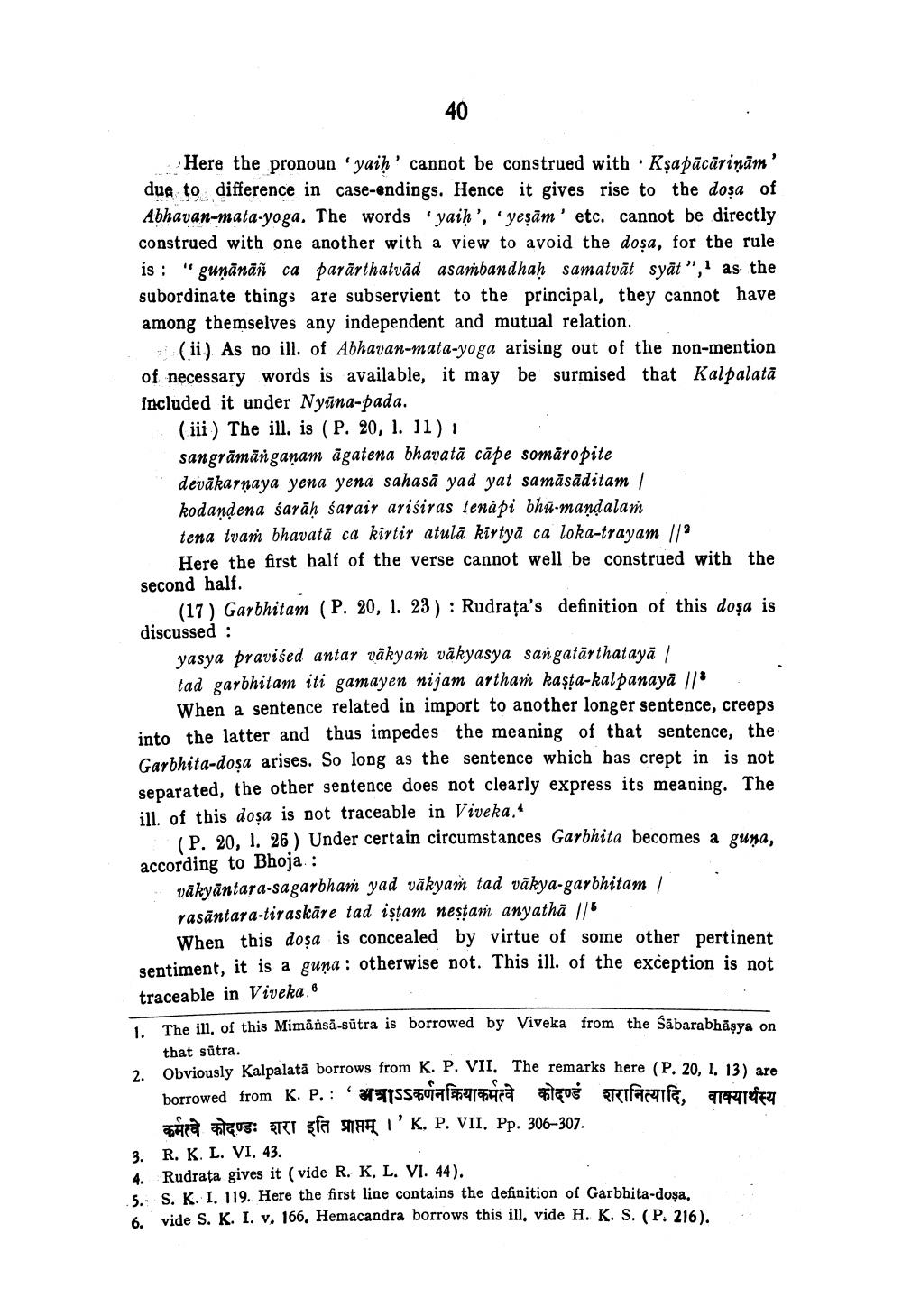________________ 40 Here the pronoun 'yaih' cannot be construed with Ksapacarinam' due to difference in case-endings. Hence it gives rise to the dosa of Abhavan-mata-yoga. The words yaih', yesam' etc. cannot be directly construed with one another with a view to avoid the dosa, for the rule is : " gunanan ca pararthatvad asambandhah samatvat syat",' as the subordinate things are subservient to the principal, they cannot have among themselves any independent and mutual relation. (ii) As no ill. of Abhavan-mata-yoga arising out of the non-mention of necessary words is available, it may be surmised that Kalpalata included it under Nyuna-pada. (iii) The ill. is (P. 20, 1. 11) sangramanganam agatena bhavata cape somaropite devakarnaya yena yena sahasa yad yat samasaditam / kodandena sarah sarair arisiras tenapi bhu-mandalan tena tvam bhavata ca kirtir atula kirtya ca loka-trayam Here the first half of the verse cannot well be construed with the second half. (17) Garbhitam (P. 20, 1. 23 ) : Rudrata's definition of this dosa is discussed : yasya pravised antar vakyan vakyasya sangatarthataya / tad garbhitam iti gamayen nijam artham kasta-kalpanaya // When a sentence related in import to another longer sentence, creeps into the latter and thus impedes the meaning of that sentence, the Garbhita-dosa arises. So long as the sentence which has crept in is not separated, the other sentence does not clearly express its meaning. The ill. of this dosa is not traceable in Viveka. (P. 20, 1. 26 ) Under certain circumstances Garbhita becomes a guna, according to Bhoja : vakyantara-sagarbham yad vakyam tad vakya-garbhitam rasantara-tiraskare tad istam nestam anyatha 16 When this dosa is concealed by virtue of some other pertinent sentiment, it is a guna: otherwise not. This ill. of the exception is not traceable in Viveka. 6 The ill of this Mimansa-sutra is borrowed by Viveka from the Sabarabhasva on that sutra. Obviously Kalpalata borrows from K. P. VII. The remarks here (P. 20. 1. 13) are borrowed from K. P.: 'Wafssoalanca alus facile, ale kica FUE: stii sfa saw 'K, P. VII. Pp. 306-307. 3. R. K. L. VI. 43. 4. Rudrata gives it (vide R. K, L. VI. 44). 5. S. K. I. 119. Here the first line contains the definition of Garbhita-dosa. 6 vide S. K. I. v, 166, Hemacandra borrows this ill, vide H. K. S. (P. 216).




